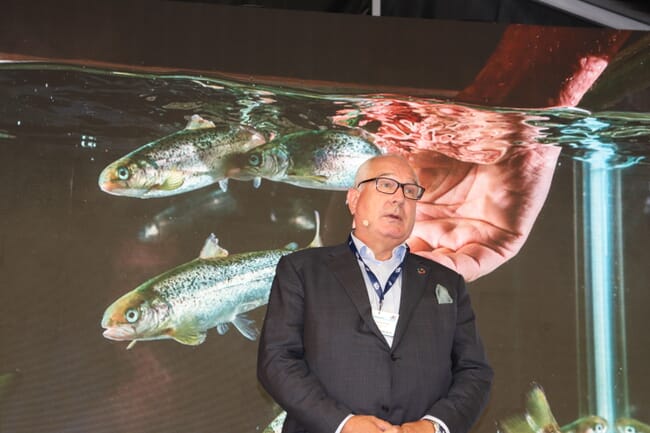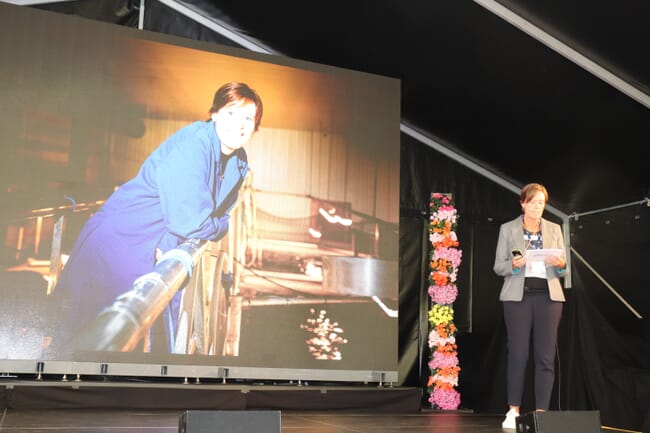The seminar’s theme was “Where salmon biology meets new technology” and included a series of talks on how technology can – potentially – be used to improve factors such as fish welfare, aquafeeds, fish health and climate change.

“The salmon production industry is currently undergoing major changes. New technologies are introduced rapidly in salmon farming, such as new production systems for off-shore and on-shore farming. Nofima’s objective with this seminar is to put focus on the broader aspects of interaction between technology and biology for better production and fish-welfare and new promising technologies,” said Øyvind Fylling-Jensen, CEO of Nofima.
Nofima’s Espmark, who is also the director of ctrlAQUA – the world’s largest multi-partner project on recirculating aquaculture systems (RAS) and semi-closed-containment systems for post-smolts – set the tone with her talk titled: “Closed containment aquaculture – full throttle with brake on”
She kicked off by explained that she was “representing those who sometimes want to hold back technology speed so that we hurry slowly”.

“We need to ensure that we meet the challenges before we accelerate full throttle,” she warmed, citing instances when, for example, mechanical delousing systems had been used prematurely, leading to mass salmon mortalities.
“Our long term commitment is towards fish welfare and to ensuring fish should be given the correct opportunities and conditions to cope with and have a good welfare in the systems that we provide them with. I think this is our most important duty towards these animals,” she said.
While she admitted that the degree of innovation in finding new solutions to deal with sea lice was “incredible” she added that “many of these attempts unfortunately are done with the least advice from people who know aquaculture”.
“In the excitement of what it’s possible to achieve with new technology it is easy to forget the star in the game – the fish. The fish biology and welfare must be in front of the development o that it is on the fish’s premises. This means developments must sometimes step back and wait for the fish approval, and for the fish to show that they are coping well,” she explained.
In order to achieve this, she stressed, improved collaboration between all decision makers is key.



